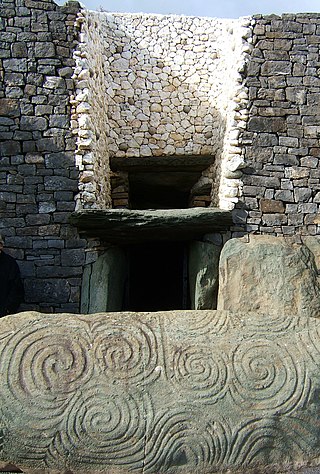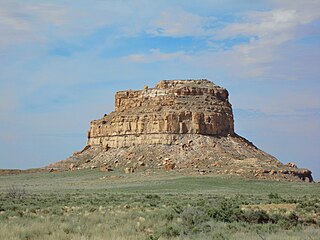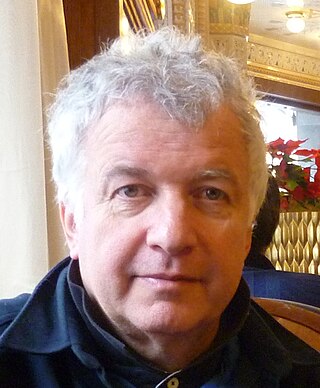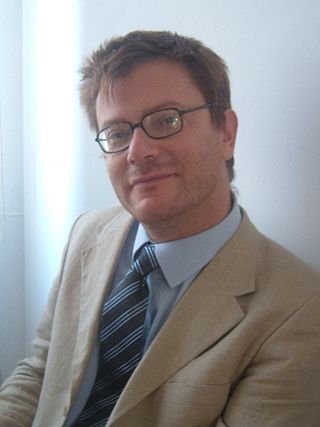
Archaeoastronomy is the interdisciplinary or multidisciplinary study of how people in the past "have understood the phenomena in the sky, how they used these phenomena and what role the sky played in their cultures". Clive Ruggles argues it is misleading to consider archaeoastronomy to be the study of ancient astronomy, as modern astronomy is a scientific discipline, while archaeoastronomy considers symbolically rich cultural interpretations of phenomena in the sky by other cultures. It is often twinned with ethnoastronomy, the anthropological study of skywatching in contemporary societies. Archaeoastronomy is also closely associated with historical astronomy, the use of historical records of heavenly events to answer astronomical problems and the history of astronomy, which uses written records to evaluate past astronomical practice.
Perkunatete, Perkunatele or Perkūnėlė is in Baltic mythology the thunder goddess mother of Perkūnas, in Slavic mythology referred to as Percunatele mother of Perun, which is probably derived from the Balts. Like many such goddesses absorbed into Christianity, she is, today, difficult to distinguish from the Christian madonna, Mary, one of whose epithets was Panna Maria Percunatele. Professor Patricia Monaghan of DePaul University also believes that she was originally derived from the Baltic thunder goddess.

Morning is the period from sunrise to noon. It is preceded by the twilight period of dawn. There are no exact times for when morning begins because it can vary according to one's lifestyle and the hours of daylight at each time of year. However, morning strictly ends at noon, which is when afternoon starts.

Alexander Thom was a Scottish engineer most famous for his theory of the Megalithic yard, categorisation of stone circles and his studies of Stonehenge and other archaeological sites.
Harry Aubrey Woodruff Burl HonFSA Scot was a British archaeologist best known for his studies into megalithic monuments and the nature of prehistoric rituals associated with them. Before retirement he was Principal Lecturer in Archaeology, Hull College, East Riding of Yorkshire. Burl received a volume edited in his honour. He was called by The New York Times, "the leading authority on British stone circles".

Fajada Butte is a butte in Chaco Culture National Historical Park, in northwest New Mexico.

Historically, most medicine wheels follow a similar pattern of a central circle or cluster of stones, surrounded by an outer ring of stones, along with "spokes" radiating from the center out to the surrounding ring. Often, but not always, the spokes may be aligned to the cardinal directions. In other cases, some stones may be aligned with astronomical phenomena. These stone structures may be called "medicine wheels" by the Indigenous nation which built them, or by more specific names in that nation's language.

A stone row or stone alignment is a linear arrangement of megalithic standing stones set at intervals along a common axis or series of axes, usually dating from the later Neolithic or Bronze Age. Rows may be individual or grouped, and three or more aligned stones can constitute a row.

Edwin Charles Krupp is an American astronomer, researcher, author, and popularizer of science. He is an internationally recognized expert in the field of archaeoastronomy, the study of how ancient cultures viewed the sky and how those views affected their cultures. He has taught at the college level, as a planetarium lecturer, and in various documentary films. He has been the director of the Griffith Observatory in Los Angeles since first taking over the position in 1974 after the departure of the previous director, William J. Kaufmann III. His writings include science papers and journal articles, astronomy magazine articles, books on astronomy and archaeoastronomy for adults, and books explaining sky phenomena and astronomy to children.

Nicholas Campion is a British astrologer and historian of astrology and cultural astronomy. He is the author of a number of books and currently pursues an academic career.
Cultural astronomy, sometimes called the study of Astronomy in Culture, has been described as investigating "the diversity of ways in which cultures, both ancient and modern, perceive celestial objects and integrate them into their view of the world." As such, it encompassed the interdisciplinary fields studying the astronomies of current or ancient societies and cultures. It developed from the two interdisciplinary fields of archaeoastronomy, the study of the use of astronomy and its role in ancient cultures and civilizations, and ethnoastronomy, "a closely allied research field which merges astronomy, textual scholarship, ethnology, and the interpretation of ancient iconography for the purpose of reconstructing lifeways, astronomical techniques, and rituals." It is also related to historical astronomy, history of astronomy and history of astrology.

Egyptian astronomy began in prehistoric times, in the Predynastic Period. In the 5th millennium BCE, the stone circles at Nabta Playa may have made use of astronomical alignments. By the time the historical Dynastic Period began in the 3rd millennium BCE, the 365 day period of the Egyptian calendar was already in use, and the observation of stars was important in determining the annual flooding of the Nile.
The Sophia Centre was founded in the School of Historical and Cultural Studies at Bath Spa University in 2002, as the first University centre in the world to teach cultural astronomy and the history and culture of astrology.
Clive L. N. Ruggles is a British astronomer, archaeologist and academic. He is the author of academic and popular works on the subject. In 1999, he was appointed professor of archaeoastronomy at the School of Archaeology and Ancient History, University of Leicester, when it is believed to have been the only appointed chair for archaeoastronomy among the world's universities. As of 2023, he was Emeritus Professor at this university.
Anthony Francis Aveni is an American academic anthropologist, astronomer, and author, noted in particular for his extensive publications and contributions to the field of archaeoastronomy. With an academic career spanning over four decades, Aveni is recognized for his influence on the development of archaeoastronomy as a discipline in the latter 20th century. He has specialized in the study of ancient astronomical practices in the Americas, and is one of the founders of research into the historical astronomy of pre-Columbian Mesoamerican cultures. He held an endowed chair as the Russell Colgate Distinguished University Professor of Astronomy and Anthropology and Native American Studies at Colgate University, in Hamilton, New York, where he is now an emeritus professor.
Journal for the History of Astronomy (JHA) is a peer-reviewed academic journal that publishes papers in the History of Astronomy from earliest times to the present, and in history in the service of astronomy. The journal's founding editor was Michael Hoskin of Cambridge University and it is currently edited by James Evans of the University of Puget Sound. It has been in publication since 1970 and is currently published by SAGE Publications.

Christian Arthur Edgar "Tim" O'Brien was a British exploration geologist and author. In 1936 he was also involved in the discovery of the Chogha Zanbil ziggurat in Southern Iran. Appointed by BP In 1967, he retired in 1971 as chairman of the boards and general managing director of the Iranian Oil Operating Companies, stationed in Tehran, and was appointed a CBE for services to the oil industry.

Giulio Magli is an Italian astrophysicist and archaeo-astronomer working primarily on the relationship between the architecture of ancient cultures and the sky.

An axial stone circle is a megalithic ring of stones of a particular design found in County Cork and County Kerry in southwest Ireland. Archaeologists have found it convenient to consider the axial five-stone circle and axial multiple-stone circle separately. The circle has an approximate axis of symmetry aligned in a generally northeast–southwest direction. The stone at the southwest side of the circle, rather than being an upright orthostat like all the rest, is a slab lying horizontally with its long thin edge along the circumference of the ring. Because it marks the axis of the circle it is called the axial stone.











